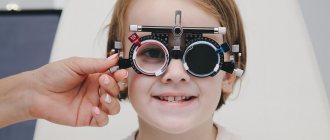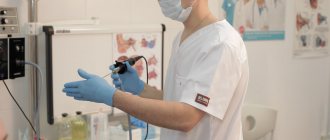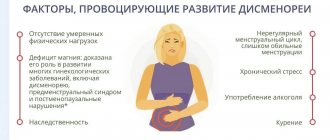Strabismus is a type of congenital or acquired visual impairment. In infants, it is usually associated with physiological underdevelopment of the eye muscles. Often by the age of six months the defect disappears without consequences. But if its causes are more serious, the disorder is persistent, then you should definitely contact an ophthalmologist, as vision deterioration may progress. Strabismus in children, as a rule, is successfully eliminated. It is advisable to try to do this before the child goes to school.
What is called strabismus?
This is a pathology in which there is an asymmetrical arrangement of the eye pupils in a person looking forward. Normally, both eyeballs should move in the same direction when examining an object. In this case, a three-dimensional “binocular” image is obtained, since the gaze of both eyes is focused simultaneously. With strabismus, when one eye looks directly at an object and the other at a certain angle, the brain perceives a distorted picture, which leads to a gradually worsening visual disorder.
Strabismus (strabismus) can be congenital or acquired in a child. Many children mow down before 6 months, and this is not a pathology. Even before 1 year of age, there is hope that the defect will disappear on its own as soon as the muscles responsible for the movement of the eyeballs become stronger.
Sometimes strabismus occurs in children aged 1-3 years, but it can occur later. This is no longer normal and indicates the presence of some kind of eye or neurological disease in the child.
Addition: It is interesting that with true strabismus, only one eye squints. There is such a thing as “imaginary strabismus”. It seems as if both eyes are looking in different directions. However, squint has nothing to do with it. The defect is purely cosmetic and is a hereditary feature of the location of the eyeballs in the sockets or a congenital abnormality that arose during the formation of organs in the embryo. The illusion of sideways eyes occurs during the development of facial bones in a newborn child, if his nose bridge is wide and the distance between the eyes is reduced.
Main stages:
- Treatment of amblyopia, improvement of vision, bringing its acuity to normal. Closed-lens glasses may be used.
- Hardware procedures aimed at developing eye synchrony.
- Restoring the muscle balance of the eyes. If muscle damage is very severe, surgery may be prescribed.
- Restoring stereoscopic vision so that the child can see normally without glasses.
Let's take a closer look at modern means of therapy.
Hardware procedures
Almost all stages of treatment require hardware procedures:
- "Amblyokor" is a device for improving vision. The child simply watches a cartoon, and special sensors record what is happening inside his visual analyzers. Video programs make it possible to restore visual function by sending the right impulses to the brain.
- “Synoptophore” is a device on which a child examines fragments of pictures and combines them, developing binocular vision.
- Amblyopanorama is a simulator that allows you to treat strabismus even in infants without effort on the part of the child. Useful in the first stages of the disease.
- “Rucheek” is a device that allows you to train the eye muscles. The child simply tracks moving and approaching objects, making the necessary movements with his eyes.
Gymnastics for the eyes
Special exercises help strengthen the eye muscles if strabismus is of non-paralytic origin. Classes should be regular and systematic. Exercises should be done 2-4 times a day, each session should last about 20 minutes.
It is impossible to explain the essence of the exercises to a small child. You can simply play with such patients - move blocks, balls, toys in front of them, alternately covering one or the other eye with a bandage.
Older children only need a bandage for monocular strabismus. Children over three years of age benefit from looking for differences in drawings every day. For those who already go to kindergarten, it is useful to play mazes (drawings) every day.
Surgery
Surgery is needed when conservative therapy has not shown effectiveness. The surgeon can restore the normal position of the eyes to at least achieve a cosmetic effect, as well as strengthen the eye muscles.
Surgery is used to either relax or strengthen the muscle that holds the eyeball if it is holding the eye in an abnormal position.
Why is treatment necessary?
If strabismus is detected in a child, you should visit an ophthalmologist with him, find out the cause and be sure to carry out the necessary vision correction. If this is not done, the child will see worse and worse, since the brain stops perceiving signals from the squinting eye (amblyopia occurs). In addition, the load on the healthy eye increases. Visual acuity decreases rapidly. Myopia or farsightedness may develop.
Due to the lack of binocular vision, the child sees distorted images of objects, his spatial orientation and coordination of movements are impaired, and his overall development suffers. Treatment of adults with this problem is much more difficult.
When is surgery needed for strabismus?
If conservative treatment methods have not given the desired effect, and the strabismus has not corrected, and the child’s vision is deteriorating, then surgery may be suggested. It corrects a cosmetic defect. Unfortunately, it is not always possible to regain the ability to see clearly. After surgery, the child will need to learn to obtain the correct image so that vision is binocular. To do this, you need to regularly visit specialized specialists and follow all their recommendations. You will also need to undergo a course of hardware therapy.
Squint surgery: features:
- surgical intervention is aimed at correcting the functioning of the muscles that move the eyeball;
- surgery is prescribed after one year of correction, if the proper therapeutic effect cannot be achieved - it is recommended for children aged 3-5 years;
- with severe pathology, several operations may be required.
Special eye exercises that need to be performed regularly after surgery are highly effective. Many clinics offer complex vision stimulation services: vacuum massage, infrared laser therapy, electrical stimulation, magnetic therapy.
Types of strabismus
This defect can manifest itself in children in a variety of ways. In this regard, strabismus is divided into several types, taking into account the following factors:
- causes of occurrence (friendly and paralytic);
- time of existence (constant and non-constant);
- the order of displacement of the eyeballs (monolateral - one-sided and alternating - alternately);
- nature of eye deviation (horizontal or vertical).
If the squinting eye looks at the bridge of the nose, strabismus is called convergent. If he looks in the direction of the temple - divergent. When the gaze is directed upward or downward, they speak of vertical strabismus. If the direction of the squinting eye is not constant, the defect is called mixed.
There is also an atypical form of strabismus (for example, with Brown or Duane syndrome), when when looking straight the eyes look the same, but the movement of one of them in other directions is limited. This pathology in children can be congenital or appear as a result of damage to the eye muscles or ligaments.
Forms of strabismus
Based on the severity of this pathology, it is divided into several forms.
Hidden form. The presence of strabismus is noticed only by an ophthalmologist; the defect is not visible externally. If you show a child some object on which he focuses his gaze, and then cover one eye, then with hidden strabismus the second pupil will move towards the object in question. Normally it should stay in place. Typically, correction of hidden pathology (heterophoria) is carried out only when it causes headaches or rapid eye fatigue.
Compensated form. Pathology with subtle manifestations can only be detected with the help of ophthalmic instruments.
Subcompensated form. The patient can partially control the direction of the squinting pupil.
Decompensated form. The patient cannot control the functioning of the squinting eye.
How is the operation performed?
Modern ophthalmologists say that the best operation is the one that is not performed. Surgery is resorted to only when all other methods have been exhausted.
Corrective surgery to correct strabismus in children is a simple surgical procedure performed in one day under general anesthesia. Operations are divided into weakening or strengthening, depending on what needs to be done to eliminate the problem in each specific case: weaken or, on the contrary, strengthen one of the muscles that move the eyeball.
After strabismus surgery in children, the rehabilitation period lasts a week and, as a rule, is easily tolerated by the child.
By the way, under the basic compulsory medical insurance program, minimally invasive surgical correction is available using vicryl (the thinnest self-absorbable suture thread) and mini-access, after which there is no visible scar.
| In order to get scheduled hospitalization with a disease such as strabismus, you need to call the hotline of the project “Moscow - Capital of Health” or leave a request on the website MSZ.rf. | SUBMIT YOUR APPLICATION |
Why do children develop this type of vision defect?
The cause of congenital strabismus in children may be the presence of chromosomal abnormalities in their body (for example, Down syndrome). Such a defect may be a consequence of a neurological disorder of brain function (cerebral palsy) or hydrocephalus. Strabismus occurs in a premature baby or one born with congenital cataracts. Strabismus can be a hereditary pathology. It is often a consequence of the expectant mother taking certain medications.
Premature babies or those whose parents have hereditary eye diseases are at risk. A risk factor is the mother's and father's addiction to smoking, alcoholism, and drug use.
The causes of strabismus in children can be:
- disorders leading to decreased visual acuity;
- eye injuries;
- brain injury or disease;
- damage or abnormal development of the eye muscles and nerves;
- infectious diseases;
- emotional stress.
There are specific causes characteristic of certain types of such visual impairment.
Concomitant strabismus
With this type of pathology, the pupils shift alternately or the same eye squints all the time. Pathology occurs due to the fact that the eyes differ in visual acuity. The brain cannot compose a normal stereoscopic image of objects because it receives signals of too different quality. It ceases to perceive the signal from the weak eye and control its functioning. A peculiarity of vision in this case is that the image does not double, since the sick baby, in fact, sees with one eye.
The reason for the development of a concomitant pathology in a child may be myopia, farsightedness, or astigmatism (blurred vision of objects due to a violation of the shape of the lens). The difference in visual acuity of the eyes occurs due to the appearance of an eyesore or retinal detachment. Often such a defect appears in childhood due to the formation of brain tumors or head contusions, as well as during severe fright.
Strabismus in a child occurs with diseases such as measles, scarlet fever, diphtheria, as well as with a sharp increase in body temperature and convulsions. Signs that a child has a concomitant pathology are squinting of the eyes and tilting the head towards the squinting eye.
Paralytic strabismus
Occurs due to paralysis of the eye muscles. The cause may be congenital or acquired damage to nerve endings, ligaments or the muscles themselves, as well as eye injuries received at birth or later. Paralysis can result from an infectious lesion of the brain or exposure to toxic substances. The apple of the affected eye loses mobility. When trying to see an object located on the side of the affected muscle, the baby experiences a double image.
Not only an ophthalmologist, but also a neurologist is involved in the diagnosis and treatment of such pathology.
Causes
Various factors can cause the development of strabismus:
- hereditary predisposition;
- premature birth, small (up to 2 kilograms) birth weight of the child;
- congenital pathologies in the structure of the organ of vision, especially the eye muscles;
- severe pregnancy, fetal hypoxia;
- cataract, glaucoma, cataract;
- infectious and inflammatory eye lesions;
- infectious and inflammatory eye lesions;
- severe refractive error (astigmatism, myopia, farsightedness);
- systemic diseases (diabetes mellitus, rheumatoid arthritis);
- infectious diseases (diphtheria, scarlet fever, measles, whooping cough, influenza);
- severe stress;
- excessive visual stress;
- severe intoxication of the body;
- traumatic brain injuries, including birth injuries;
- oncology of the visual or nervous system.
Symptoms and signs of strabismus
Concomitant strabismus. Its presence is judged if, when the child’s attention is fixed on any object, one eye looks straight ahead, and the other up, down or to the side.
If a child moves his gaze with his normal eye to the left or right, the gaze with the squinting eye shifts in the same direction, and the difference in visual angles remains the same. In this case, they say that “the equality of the primary and secondary deflection angles is observed.” The mobility of the squinting eye is preserved, there is no double image.
With convergent strabismus, the gaze of one of the eyes is directed towards the bridge of the nose. A concomitant manifestation of this pathology is farsightedness.
A characteristic sign of divergent strabismus is the direction of gaze of the diseased eye towards the temple. Often, myopia of varying degrees of severity develops.
Paralytic strabismus. Unlike pathology of the concomitant type, the difference in the angles of vision of the healthy and damaged eye is not constant. This is due to the inability of the eyeball to fully move in the desired direction. To see an object located on the side of the affected eye, it becomes necessary to turn and tilt the head. At the same time, the child becomes dizzy.
If the optic nerves or muscles are damaged, he cannot raise the eyelid, the eye is motionless, and the pupil is dilated.
Classification
In ophthalmology, several subtypes and forms of paralytic strabismus are distinguished. In terms of involvement of the eyes, it can be unilateral or bilateral, of the muscular system - isolated (with damage to a small area of one extraocular muscle) and widespread (with damage to two or more muscles). Based on pathogenetic characteristics, three forms of the pathological process are distinguished:
- Nuclear strabismus
is an acquired form of the disease in which the cause of abnormal tension or relaxation of the intraocular muscles is located in the intracranial nuclei. Most often, the source of their damage is a neurogenic infection: encephalitis, meningitis, multiple sclerosis, brain damage due to syphilis. This form of the disease is more often diagnosed in adults, and can also be congenital in nature (with intrauterine infection of the fetus, for example). - Stem (basal) strabismus
is another type of acquired pathology. It occurs due to damage to the nerve fibers and blood vessels associated with the extraocular muscles at the base of the brain. The source of the pathology is infectious or toxic destruction of brain tissue, head trauma at the base of the skull, anomalies of the arteries (sclerosis, aneurysm, etc.). - Orbital strabismus
is a form of the disease in which the source of the problems is located inside the orbit of the eye. The cause of abnormal tension of the extraocular muscles in this case is damage to the orbital bones, orbital abscess, tumors and other neoplasms. This form is considered the most favorable: after eliminating the source of the problems, the functions of the visual organs are restored quite quickly and in full.
Externally, paralytic strabismus of different forms does not differ from each other. Since during the diagnostic process the doctor needs to find out what exactly needs to be corrected to restore the anatomy and physiology of the eye, it is necessary to differentiate individual types of the disease.
How to independently determine the presence of strabismus in a baby
The following signs may indicate that a child has crossed eyes:
- If you show a bright toy, he cannot focus his gaze on it (as if he is looking for it with his eyes in order to see it well), he turns his head, since he is not able to see the object completely.
- The pupils move asynchronously.
- When bright light enters the eyes, one of them closes or the pupil moves to the side.
- Wanting to touch a visible object, the baby does not reach or bumps into it, since he cannot correctly assess the distance.
- The child squints his eyes because he sees a blurry image.
Note: Immediately after birth, the baby is examined by an ophthalmologist to detect possible problems with eye formation. Examinations are then carried out at 2, 6 and 12 months of age. Children at risk should be registered with an eye doctor and undergo regular preventive examinations.
How does a child with strabismus see everything around him?
- With strabismus, objects in children's field of vision may appear double. The child becomes limited in his actions; he cannot, for example, take a spoon or fork from the table, because he sees not one object, but two.
- Vision with any degree and type of strabismus is almost always low. The eye that squints usually develops a complication such as amblyopia.
- Children with strabismus see the world not 3D, but flat, and cannot analyze volume, distance, space. This is due to the fact that they lack stereoscopic binocular vision.
Diagnostic methods
To select a treatment method, an examination is carried out. First of all, the doctor examines the child to determine the symmetry of the face, eyes, displacement of the pupils when closing one of the eyes, changes in visibility when turning the head.
Methods are used to clarify the type of pathology. A synoptophore is used - a device for studying eye mobility and establishing strabismus angles. Computer refractometry is performed to detect myopia, farsightedness and astigmatism.
Methods such as ophthalmoscopy (examination of the fundus of the eye) and eye biomicroscopy (the condition of the lens, retina, optic nerve and other elements are studied) are used. Special test systems are used to determine visual acuity.
If a paralytic form of strabismus is detected in children, a neurological examination is performed to clarify the extent of damage to the nerve fibers.
What's next?
Treatment of strabismus cannot be considered complete after the operation is completed. It’s not like with appendicitis - they cut out the inflamed appendix and forgot about it.
Firstly,
Only after 3 months will surgeons be able to finally evaluate its result and decide whether the child needs an additional surgical stage in six months or not.
Secondly,
If a child has strabismus, special exercises are prescribed without fail using a synoptophore apparatus. The course ranges from 10 to 20 sessions.
But it’s too early to stop there - you need to work with the child yourself. For this purpose, there are gymnastics for strabismus in children, which the doctor will familiarize you with in detail before discharge.
Then everything depends only on the patience of the parents and the discipline of the child, but happy children's eyes, capable of seeing all the beauty of the world around them, are worth it!
The material was prepared jointly with the expert:
Leonid Borisovich Kononov, ophthalmologist of the highest category, candidate of medical sciences, head of the department of eye microsurgery of the Morozov Children's City Clinical Hospital
Source:
information project “Moscow is the capital of health”
Treatment
When treating strabismus, methods such as optical correction, hardware, surgical, as well as orthoptic and diploptic treatment are used. At home, parents, in agreement with the doctor, work with the child using a special system of eye exercises for treatment.
Optical vision correction
Restoring visual acuity and fixing the correct position of the pupils is done using special glasses or contact lenses. They are made to order only as prescribed by a doctor, choosing a comfortable and soft frame. Often, spectacle correction is used in combination with hardware techniques.
Doctors recommend ordering 2-3 pairs of glasses at once, since they often break in children. Vision can become even worse if the child spends the few days without corrective devices during the few days it takes to make new ones.
Hardware treatment
This treatment is used to eliminate the effect of suppressing the functions of the squinting eye, when vision ceases to be bipolar. To improve the functioning of the diseased eye, electrical or magnetic stimulation of the retina is performed. Already in the first months of life, a vacuum ophthalmic massage can be prescribed to develop the eye muscles. Classes are conducted on a device that creates a special load on the malfunctioning eye.
The “amblyocor” device is used to eliminate “lazy eye syndrome”, “amblyopanorama” (use of blinding fields). A “synoptophore” is used to synchronize eye movements. At the same time, the baby sees different figures (for example, a square and a flower) and must try to combine the images.
Surgery
If conservative treatment of strabismus in children is ineffective, surgical removal of the pathology is performed at the age of 3-5 years.
Two types of operations are used. To increase the mobility of the eye, the eye muscles are transplanted or the tendon is weakened by cutting it. To eliminate excessive mobility, the muscle responsible for eye movement is shortened.
Healing of the eye after treatment occurs within 1 week. Anti-inflammatory drops are placed into the eye.
The child should not play sports for 4 weeks. You can visit a child care center 2 weeks after the end of treatment, but you should protect it from stress.
Diploptic or orthoptic treatment
These methods complement surgical vision correction. With the help of special devices, using computer programs, the eye muscles are trained. This allows you to reduce the angle of strabismus.
Eye exercises
For mild visual impairment, doctors recommend special exercises to train the muscles that control eye movement. They complement the main treatment.
Exercise with a spinning top. When rotating a bright musical spinning top, the baby focuses and concentrates his attention on an attractive object.
Game "find a pair". Paired figures cut out of paper are used (they should be clear, bright, and clearly recognizable by the baby). Arrange the figures in random order in the cells drawn on a sheet of cardboard. The child must find identical images and put them aside. This game helps develop binocular vision and is suitable for children aged 2.5-5 years.
Gymnastics for strabismus for children from three years old - treatment at home
Children 3-5 years old can already perform more complex tasks, so before gymnastics it is necessary to print out pictures to compare and search for missing or extra items. The main thing is that it is interesting to follow and compare. At this time, the child's eyes will move from one picture to another.
Gymnastics for strabismus for children over 3 years of age:
- ask the child to move his eyes up and down, right and left, diagonally - you can ask him to follow the movement of your fingers, toys, etc.;
- closing and opening the eyes - repeat 5-6 times;
- make a bright mark on the window glass from tape or colored paper, 1-2 cm in diameter, and ask the child to focus on the mark, and then look into the distance, to the landscape outside the window;
- take a small ball with a loop, hang it on a pointer or any stick, pencil, move it in different directions - the child must follow the direction of the ball;
- bring the ball closer to the child’s face and watch the baby’s eyes; they should evenly converge towards the bridge of the nose.
You can perform the exercises several times a day. In total, classes can last up to two hours, but not consecutively. Divide this time into 3-4 sessions. Gymnastics helps improve blood circulation in the visual organs, trains accommodation, strengthens the extraocular muscles, and contributes to the overall health of the visual system.
Recommendations for parents
In order to prevent strabismus and visual impairment in children, it is necessary to control the time they watch TV shows and spend time at the computer. The child should have a properly equipped and well-lit place where he could draw, look at pictures and books.
You should not read while lying down, placing the book too close to your eyes or to the side. You should not buy glasses using the “selection” method without having your vision checked by a specialist. If you have any visual impairment, you should immediately consult a doctor.









